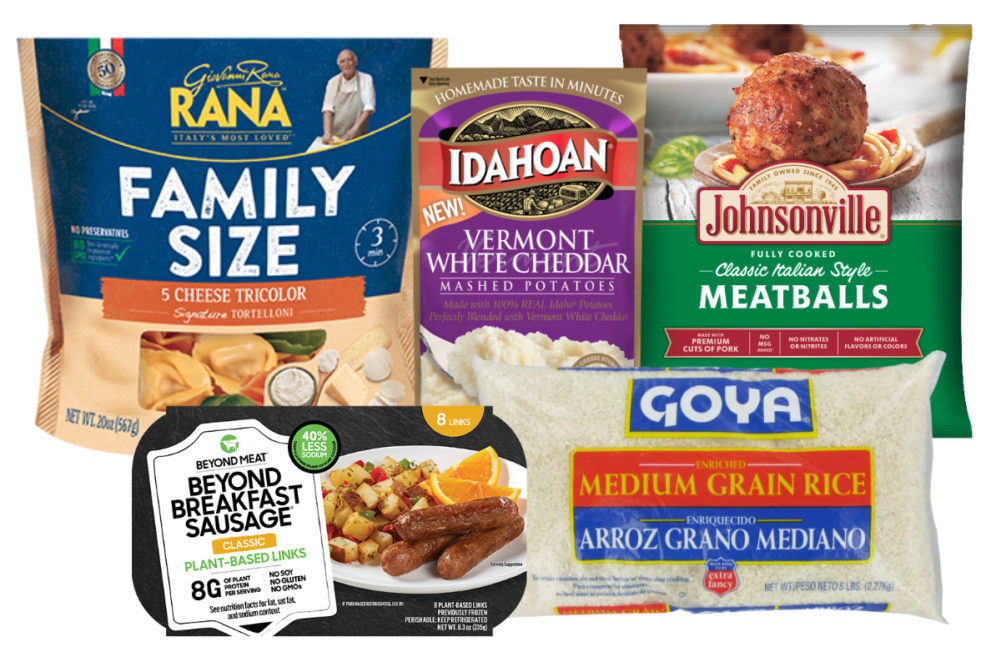 CHICAGO – The total consumer packaged goods industry grew about 10.4% in 2020, outpacing the prior three-year annual growth rate of 1.8%, according to Boston Consulting Group (BCG) and Information Resources Inc.’s (IRI) annual CPG Growth Leaders List. The report found mid ($1 billion to $6 billion in annual sales), small ($100 million to $1 billion), extra-small (less than $1 billion) and private label CPG manufacturers gained significant market share over larger manufacturers in 2020.
CHICAGO – The total consumer packaged goods industry grew about 10.4% in 2020, outpacing the prior three-year annual growth rate of 1.8%, according to Boston Consulting Group (BCG) and Information Resources Inc.’s (IRI) annual CPG Growth Leaders List. The report found mid ($1 billion to $6 billion in annual sales), small ($100 million to $1 billion), extra-small (less than $1 billion) and private label CPG manufacturers gained significant market share over larger manufacturers in 2020.
In many instances, small-to-mid-size enterprises, collectively referred to as SMEs, and start-ups, were able to get into the marketplace because of out-of-stocks of large CPG brands in retail — especially in the first half of the year — along with reduced traffic in the convenience channel, which is skewed toward large companies.
While pack-size innovation contributed to retail growth during the pandemic for more at-home eating and snacking, other drivers were premiumization and flavor innovation. Snack sizing of packaging is expected to return as consumer mobility increases with vaccinations; however, BCG and IRI predict trends that accelerated in 2020 and will sustain post-COVID-19 include hyper-targeted smaller players that will accelerate innovation alongside continued development of private label and value brands. Consumers are likely to continue to value four broad sets of benefits, according to the report, including self-care and societal-care, at-home indulgence, at-home convenience and taste exploration — both flavor and claims driven.
Rana Meal Solutions, Oak Brook, Ill., a manufacturer of refrigerated heat-and-eat pastas, sauces and meal kits, had $292.7 million in sales in 2020, an increase of 54.5% from the previous year. While the company did not introduce any new products during the pandemic, the convenience brand was discovered by many shoppers for the first time, driving volume sales up 49.4% from before the pandemic.
Idahoan Foods, Idaho Falls, Idaho, another SME, accelerated its innovation efforts at the onset of the pandemic to offer more premium flavors of its instant mashed potatoes, attracting 4.2 million new buyers. This grew sales to $464.3 million in 2020, an increase of nearly 32% from the previous year. Volume sales increased 24%.
Many SMEs and start-ups are challenged with fast-tracking product development because of a lack of resources as well as unique ingredient needs. This is especially true when it comes to minor ingredients used in low amounts, such as flavors.
During the pandemic, like most businesses, ingredient suppliers had to pivot with how they work with food product developers to maintain the flavor innovation momentum consumers now crave. Working with smaller CPG companies requires more focus and resources.
“Bringing a new food or beverage product to the market takes a deep understanding of the complexities of launching in North America,” said Dave Franz, vice president of sales and marketing, FlavorSum, Kalamazoo, Mich. “Developing a product aligned with consumer needs and interests starts with confirming you have the right idea. You need to transform the idea into a product that meets consumer expectations for taste and performance. But the process doesn’t stop when you have a great-tasting prototype.
“Commercialization involves finding ingredient suppliers and a reliable facility for production. And you must ensure you’re providing a product that meets standards for food safety, shelf life and nutritional labeling.”
There’s great opportunity for SMEs and start-ups as shoppers enter the post-pandemic period. Bloomberg estimates that about $1.3 trillion was saved by consumers this past year by not dining out, traveling or spending on entertainment. They are ready to spend and are seeking flavor adventure.
“This is the K-shaped recovery economists are talking about,” said Krishnakumar Davey, president of strategic analytics at IRI. “More than 20 million jobs were lost during COVID. On the other hand, with all the stimulus payments and unemployment benefits, around 80% of people were flush with cash. Yes, there’s food insecurity at the bottom tier — that’s why we call it a K shape — but the 80% who had more cash had less avenues to spend, so people bought more higher quality products and didn’t mind paying the higher price. Even lower-income households are trading up.”
Mr. Franz said SME companies are driving food and beverage innovation with highly attractive growth rates. This is expected to continue, presenting an opportunity for innovators to enter the marketplace.
“SMEs launching food and beverage products often need more than just a high-quality product from their flavor suppliers,” Mr. Franz said. “They may require support with applications testing to identify the optimum flavor usage rate or how to adjust other ingredients to get the best taste performance in their food or beverage product.
“If they are innovating in growth segments, such as functional beverages or no- and low-sugar products, they may look for expertise on how to optimize taste through sweetener and active ingredient sourcing and dosage paired with masking solutions.”
FlavorSum is a newly formed company that unites three suppliers — National Flavors, Bonnie & Don Flavours and GSB Flavor Creators. The three companies became members of the Riverside Flavor Platform in 2020.
“We understand the challenges that SMEs face when trying to grow their brands and structured our business model to help them succeed,” Mr. Franz said.
The company continues to offer customers FlavorSum Access, an online platform formerly known as Flavorush. It enables customers to get flavor samples shipped quickly and download the technical documents needed to commercialize products.
The new company also is launching two new platforms. FlavorSum Collaborate is a team dedicated to supporting customers on formulation, compliance and production efficiency.
“The other new offering is FlavorSum Discover, a subscription-based platform that gives customers the market, category and consumer insights they need to stay aligned with current and emerging trends. We’ll also partner with customers to develop and execute primary, proprietary research studies that address their specific questions.”





